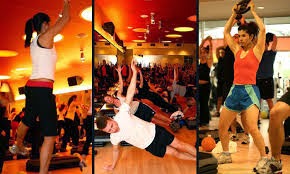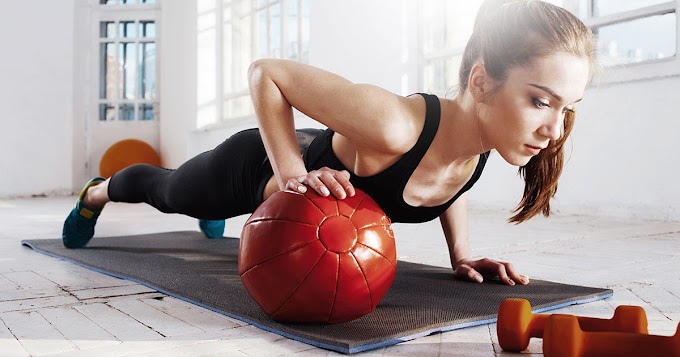The push-up is a classic exercise included in many types of workout routines, as it offers muscular benefits, is easy to learn and does not require any special equipment. Though push-ups can help you build your upper body strength and muscle mass, modifying them will help broaden the array of muscles you work and provide more of an overall benefit.
Knee Push-Ups
To perform knee push-ups, assume a normal push-up position but put your knees on the ground rather than your toes. As with regular push-ups, knee push-ups still work your chest, shoulders and triceps. However, because you have reduced the amount of body weight your muscles have to support, these push-ups are easier to do than standard push-ups. If you are new to fitness and working your way up to regular push-ups, or have already performed chest exercises and have temporarily diminished strength, knee push-ups can particularly benefit you.
Wide-Arm Push-Ups
If you are looking for more of a challenge, wide-arm push-ups may be appropriate for you. Rather than having your hands positioned underneath your shoulders, place your hands about six inches out to each side. This will place more emphasis on your shoulders, lats and chest muscles, and place less emphasis on your triceps.
Elevated Feet Push-Ups
Performing push-ups with your feet elevated also adds an extra challenge, because the higher your feet are, the more resistance there will be during each push. These push-ups involve assuming a normal push-up position with the exception of putting your feet on a stable surface, such as a weight bench or chair. Be sure that the platform upon which you place your feet does not move and is strong enough to support the weight of your legs.
Stability Ball Push-Ups
The concept of stability ball push-ups is similar to that of elevated feet push-ups, as a higher foot position provides an extra challenge. But placing your feet on a stability ball rather than a sturdy platform introduces the likelihood of movement and makes it more challenging to maintain your balance. This instability will force you to use your abdominal muscles to keep yourself steady.
Diamond Push-Ups
If you use wide-arm push-ups to enhance the challenge to your shoulders and chest, you may wish to complement them with diamond push-ups. The diamond push-up emphasizes your triceps rather than your chest, so it can help you increase your arm strength and size. To perform diamond push-ups, assume a regular push-up position but place your hands close together, with your thumbs and index fingers forming a diamond of space between them.
Explosive Push-Ups
Explosive push-ups, also known as plyometric push-ups and dynamic push-ups, help you develop explosive strength. Explosive strength is when you create as much power as you can in a very short period of time. This is common in sports; jumping is an example. To perform explosive push-ups, position your body as you normally would and bend your arms to lower your body as normal. Rather than lifting your body with a slow, controlled motion, explode upward and push yourself off of the floor. It's best to use a cushioned mat with this exercise.
Single-Armed Push-Ups
Single-armed push-ups are quite challenging, as you are using only one side of your body to produce the amount of force you usually would produce with both sides of your body. In addition to providing an extra challenge to the muscles of each arm, this exercise engages your core, which helps you maintain balance on just one arm.
Renegade Rows
Renegade rows are a distinct push-up variation that also helps you develop your biceps and back muscles. To perform renegade rows, you'll need to place two dumbbells on the ground where you would place your hands for push-ups. Assume a push-up position with your hands on the dumbbells. Perform one push-up as you normally would, and then take turns performing a dumbbell row with each dumbbell before doing another push-up.








